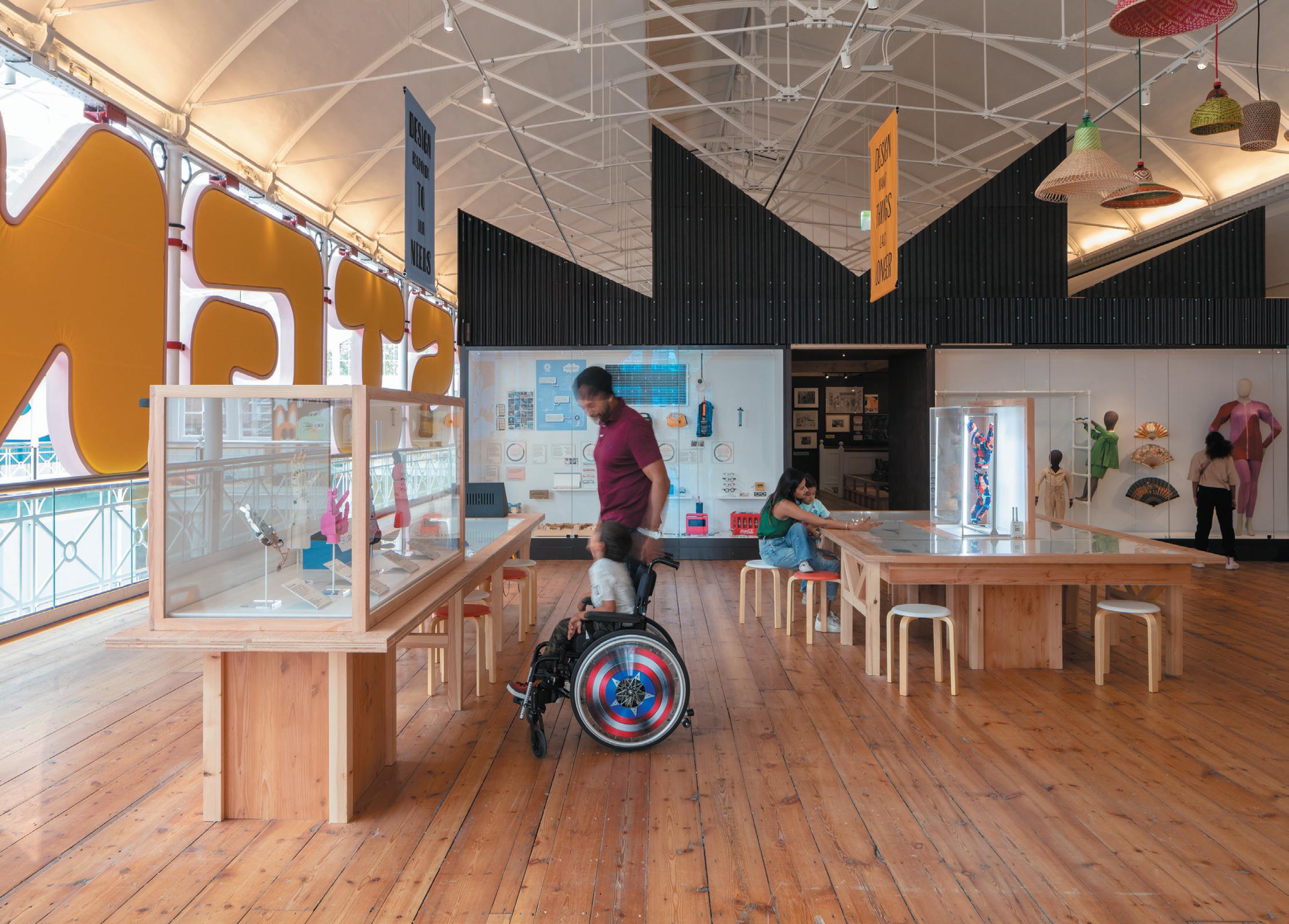
3 minute read
A national treasure
The first museum of its kind in London was built to inspire the next generation through the power of creativity. Now, after three years, the young v&a has reopened its doors.
De Matos Ryan and AOC architecture worked with the Young V&A project team on the public space, with input from over 22,000 school children, teachers, Special Education Needs and Disabilities (SEND) community groups and locals. A pillar in its Bethnal Green community for 150 years, after a £13 million investment the art, design and performance museum highlights inspiring stories of children and young people’s ingenuity, alongside 2,000 works from the V&A’s collections.
“Young V&A has been designed with and for our youngest audiences,” says the museum’s director Tristram Hunt.
“It is a place where they can have fun, be imaginative and take inspiration from the V&A’s incredible collections.” Featuring accessible learning spaces, a purpose-built gallery for larger exhibitions and a shop and café, the interior has been inclusively designed for families of all ages to visit.
“The museum is the first of its kind and by continuing to work in partnership with teachers and schools – locally and across the country – it will become a national resource for supporting the teaching of art and design.”
Bearing flexibility in mind, a step-free and wheelchair accessible entrance welcomes people into the museum, while on the ground floor the Reading Room offers a multi-use quiet space for reading, praying or breastfeeding – somewhere to retreat from sensory stimulation. On the north side of the building the three galleries, Play, Imagine and Design (designed by AOC architecture) cater to different age groups, from babies and toddler years through to young adulthood. Multiple sensory elements feature, including optical illusions, a self-portrait maker and a performance area and stage, as well as quiet areas and reading nooks to support neurodivergent visitors. In Imagine, the lighting is lower than in the other galleries.
Elsewhere, three new workshop spaces on the lower ground floor complement learning and educational activity. Due to launch in October, the Young V&A School’s Programme will offer curriculum-based workshops on design and creativity-orientated subjects, consulted on by teachers and parents. “For years this museum has been an important community space [and] a useful teaching resource,” says executive headteacher at Banabandhu and Globe Primary School, Marie Maxwell. “We were thrilled we were asked to play a role in the development.” Along with others, Maxwell worked closely with curators, artists, designers and architects to create a memorable experience for pupils.
Promoting user interactivity, visitors can expect to see interior and architectural features and commissions designed in part by young people, including the colour prevIous page top Image: Town square with feature stair
Bottom Image: Play Gallery palette throughout the museum which was curated by pupils to represent the Bethnal Green area. A new spiral staircase stands out in the main lobby, conceived throughout 40-plus workshops with local school children and inspired by the museum’s collection of optical toys. Elsewhere, and on a much smaller scale, a patchwork quilt made by students is on display, embroidered and dyed using sustainable practices to communicate thoughts on fast fashion.
Other items to be exhibited comprise furniture, fashion, ceramics, paintings, print and posters, as well as sculptures – including a Syrian rattle dating from 2300 BC and Japanese Samurai armour. Works by leading artists, designers and changemaker are also present, introducing names such as Icelandic-Danish artist Olafur Eliasson, climate activist Greta Thunberg and one of the most influential painters and printmakers of the 20th century, David Hockney.
Accessible and sustainable, many of the museum’s showcases have been reused in creative new displays. Timber taken from the former gallery has been repurposed and transformed into tables, and reclaimed timber studs from temporary exhibitions now serve as support structures. Visitors will also see terrazzo worktops made from former masonry rubble. On the first floor, The Factory and The Shed sample the roof trusses and the original ‘Brompton Boilers’ cladding profile to create new structures reminiscent of the area’s industrial heritage. Expressed components – designed for future re-assembly – are clad in corrugated sheets of low-carbon hemp fibre panels with sugar-based resin made entirely from agricultural waste. De Matos Ryan also worked on limiting carbon emissions by making the building more energy efficient.
Externally, the project celebrates and restores the building’s Victorian architecture. Original windows have been uncovered to allow natural light to flood into the space and a 19th century marble mosaic floor has been reinstated. Significant improvements to circulation and noise have also been made to support SEND visitors. “Young V&A is an exceptional new cultural and educational resource,” says MP for Bethnal Green, Rushanara Ali. “It will continue to bring significant benefits to local young people and their families, while welcoming visitors from all over the country to experience the diversity, dynamism, creativity and history of this extraordinary area of London.” vam.ac.uk/young young v&A MuSeuM was founded in 1872 and exists as a branch of the Victoria and Albert Museum, the UK’s national museum of applied arts. Specialising in objects by and for children, the heritage site offers free admission to families and schools and is open daily from 10.00 to 17.45. The 2023 refurbishment was completed by the Young V&A project team, de MAtoS ryAn, Aoc Architecture and approximately 22,000 children, young people and supporters.

Drawing on the best of the V&A’s collections and supporting under-18s through key stages of their development, the 5,200 sqm premises is considered a world-class centre of creativity and an essential public building for the local community.













